Ivory and Pearl Grey Silk Accessories,
1770s
Colonial Williamsburg, December 2012.
Our previous Threaded Bliss post featured a red cassimere ensemble, accessorized for Christmas wear with an ivory and pearl grey silk hat and muff, and a breastknot of pearl grey ribbon and paper flowers. Here, at last, is the promised Threaded Bliss for those accessories!
The pattern: The muff cover is taken from the pattern I made during a muff workshop at a Colonial Williamsburg conference almost two years ago; it is thus identical to the green and the black and blue muff covers. The hat, like the purple one and the black and blue one, is covered by just fiddling and pleating by eye.
Detail of the top of the covered hat.
Inspirations: For a brief run-down of muff history, changes in muff shapes, and trends in fashionable trim designs and materials, see these earlier posts about the green workshop muff. Here are a couple of additional images that served as inspirations for this particular design.
As with the green workshop muff and the black and blue cover from last December, this new muff cover began with a row of trim edging each side of the muff. This simple yet very pretty silk example from Nasjonalmuseet for kunst, arkitektur og design (via DigitaltMuseum), is dated 1780-1810.
This embroidered silk satin muff (acc. no. 43.1824) in the collection of the Museum of Fine Arts in Boston is similarly dated to about 1785-1800 and features the same row of trim edging either side of the muff, this time with a design centered in between.
Both muffs reflect the more rectangular shape popular through the 1770s. By the early 1780s, muff shapes began to trend towards squarer, more boxy designs, and fur gradually replaced silk as the dominant, most fashionable material. While fur muffs and silk or velvet muffs trimmed in fur are certainly seen in images prior to the 1770s, prints from the 1780s and 1790s are very heavy on all-fur muffs, with silk examples being increasingly rare. The overall size of muffs also increased (sometimes quite dramatically, much to the delight of satirists in prints!) in the final two decades of the eighteenth century. Because my reenacting is almost exclusively concentrated during the Revolutionary War and the years just prior to it, my muff and its covers reflect the earlier fashion for rectangular muffs of silk, like these extant pieces.
Construction details: As I mentioned above, the base of the muff cover is copied from my workshop muff cover and thus replicates its construction. The trim is simple ruched strips of self-fabric down the sides and in curves down the center, inspired by the S-curve trim designs popular on stomachers and gowns during the late 1760s and 1770s (see Ashley's blue/yellow gown for one example). Three bows of pearl grey silk satin ribbon accent the curves of the center trim.
Muff cover of ivory silk taffeta, trimmed with self-fabric ruching
and pearl grey silk satin bows.
The brim of the hat - both on top and underneath - is covered in the same way as Ashley's purple/brown changeable silk hat, featured in that earlier tutorial. The crown is gathered and finished at the top with a covered wooden button. Ruched self-fabric trim finishes the edges of the brim and the crown is surrounded by a collection of grey satin bows.
Detail of the crown, with the center covered button and lots of bows.
The fabric: The hat blank is made of straw with the low crown fashionable through the second half of the eighteenth century. The ivory silk taffeta is the same medium weight silk I used for the alternate petticoat to pair with my blue chintz jacket. I had just enough left over bits to line the hood of a cloak, cover and trim the hat, and make the muff and its trimmings. The pearl grey silk satin ribbon that forms the bows, the hat ties, and the breastknot is from Burnley and Trowbridge.
Finishing the look: You've already seen the finished look with these accessories paired with an outfit, so there isn't much left to say here! :-)

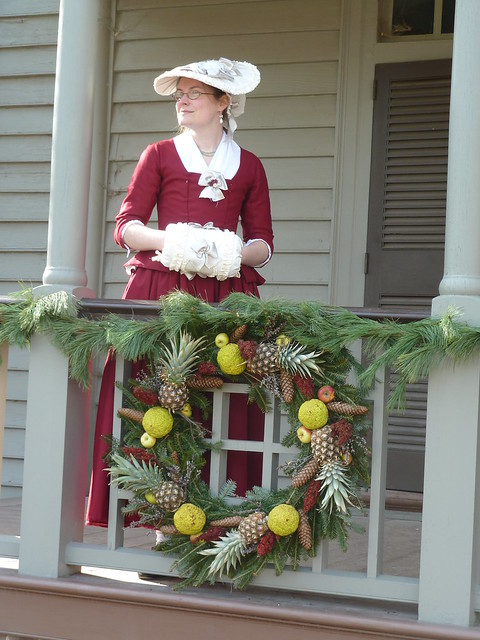
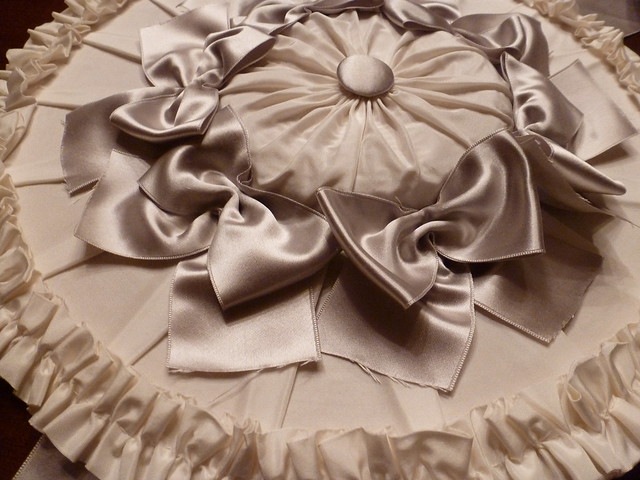

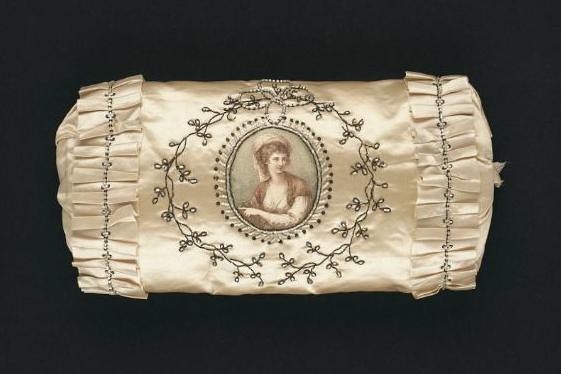

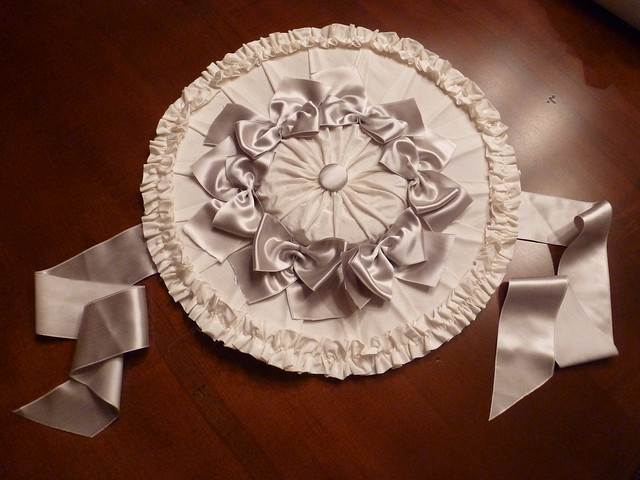
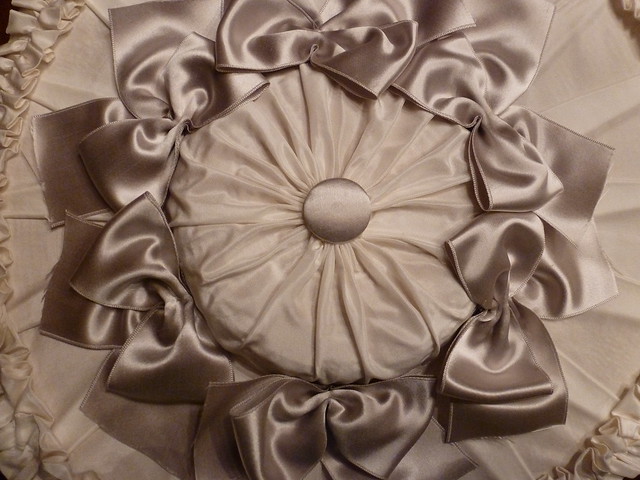


6 comments:
So Beautiful. You always make the loveliest things. :)
Oh SQUEEEE! That hat and muff are GORGEOUS!!
Oh fantastic job! The hat and muff are gorgeous. I love the ribbon trim. And I have to say, cranberry is the perfect Christmas color. :)
-Emily
These are so inspiring, and delicious-looking! I half want to sink my teeth into their pastry-puffiness!
Awww, thank you for the compliments, ladies!
Haahaaa, Annabelle! I was thinking as I was making these that they did rather look like tasty wedding cakes! The muff trim design also reminded me of Jasperware, which has in turn inspired yet another muff cover, to be debuted soon! :-)
Such lovely accessories! The hat is especially lovely, all the pleating makes it look like a delicious confection.
btw, I think I may have been in that muff class with you! :)
Post a Comment